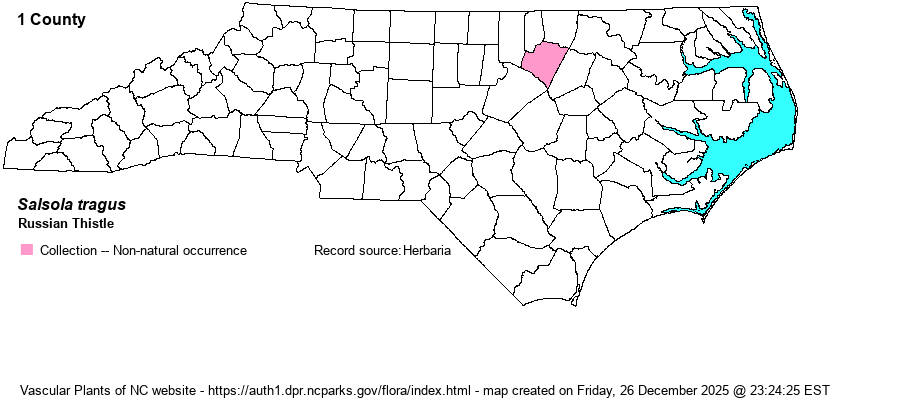| Author | L. | |
| Distribution | Formerly included within Salsola kali, but split out in FNA (2003) and other recent texts; however, Weakley (2024) does not include this entity by this name, and apparently he has moved it back into S. kali, of one variety or another. RAB (1968) indicate its presence in Franklin County; however, to date no verified specimens have been seen from NC.
Native of Eurasia; across much of N.A., mostly inland (and not a coastal dune species like the others in the genus). | |
| Abundance | Very rare, if confirmed as occurring in NC. Thus, the NC NHP Rank of SE could also be listed as SR (Reported) or even SYN (Synonym). | |
| Habitat | Disturbed places, presumably sand ones. | |
| Phenology | Flowering and fruiting June-frost. | |
| Identification | Weakley (2018) says this species is not fleshy, at least in fresh material; the other Salsola taxa are quite fleshy/succulent. In addition, the leaf blades are extremely narrow (less than 1 mm wide), and the leaves have only a weak apical spine. These essentially filiform leaves with no obvious spines impart a much different look from the other taxa. | |
| Taxonomic Comments | Some older references included all Salsola taxa within Salsola kali.
| |
| Other Common Name(s) | Prickly Russian Thistle | |
| State Rank | SE | |
| Global Rank | GNR | |
| State Status | | |
| US Status | | |
| USACE-agcp | FACU link |
| USACE-emp | FACU link |

